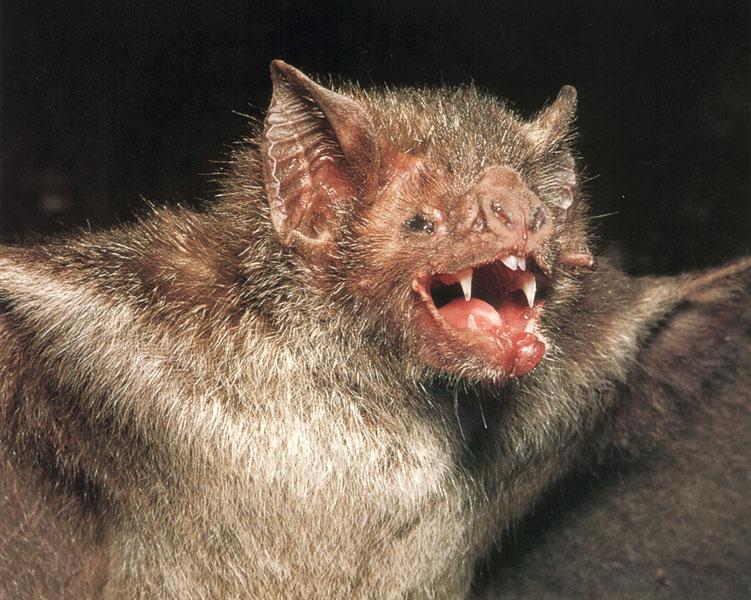By Cynthia Catapano
Backyard Wildlife

Vampire bats may be undeservedly vilified. Photo by Justin, used under a Creative Commons Attribution 2.0 license. https://creativecommons.org/licenses/by/2.0/
Vampire bats are a legendary theme in horror movies and on Halloween, but are they really that frightening?
Fear of vampire bats has been around for centuries. Arthur Greenhall, in his book, Natural History of Vampire Bats, writes about a vampire bat that was involved in a rabies outbreak in Trinidad in the 1930s, leading to widespread execution of all kinds of bat species, including many thousands of fruit and nectar-eating pollinators throughout Latin America.
Vampire bat stigma still persists; however, vampire bats are far more intelligent and sophisticated mammals than we give them credit for.
Vampire bats are the only mammals that feed solely on blood, or “sanguivorous,” says bat biologist Christopher Wisniewski at Southern Connecticut State University. Of the 150 bat species in Latin America, there are only three vampires – each with their own preference for blood. The white-winged vampire (Diaemus youngi) prefers birds and mammals; the hairy-legged (Diphylla ecaudata) feeds on birds; and the common vampire bat (Desmodus rotundus) feeds on mammals.
Your only chance of getting bit is to sleep outside in the open, where they are known to feed. You may not even realize you’ve been bitten. Vampire bats sport razor-sharp teeth; their incisors are so sharp that sleeping prey barely stirs when they’ve been bitten. Vampires do not suck their prey’s blood like in the movies; instead, vampire bats lap up their bloodmeal like other mammals.
“D. rotundus owes most of its success to its amazing saliva,” Wisniewski says.
Some proteins act as painkillers, lowering their risk of detection, and another serves as an anticoagulant. This glycoprotein, fittingly named Draculin, is currently being used in medical research to treat illnesses such as heart failure and stroke, according to a 2008 article in New Scientist.
Wisniewski says that the vampire bat has an amazing stealth approach to find and feed on their prey. “It’s a pretty big deal, as well as rare, for a bat to walk on the ground,” he says, explaining that they land a distance away from their prey, tiptoe on all fours over to the animal, and hop on. They use echolocation like their insectivorous cousins, and can detect the slow, deep, breathing of a sleeping animal. More amazingly, they have a pit organ similar to that of snakes. This heat-seeking tool detects infrared radiation, so they are able to home in on where blood is flowing closest to the surface of the skin.
Vampire bats do not kill their prey, and although they consume over half their body weight in blood per night, they remove only two teaspoons of blood from a single animal. Due to their diet, D. rotundus cannot go more than 60 hours without a bloodmeal.
Luckily, these sanguivorous mammals are generous with one another; they practice what is known as reciprocal altruism. It may sound strange to call a vampire bat compassionate, but they are astonishingly unselfish, sharing regurgitated bloodmeals with family and strangers in need. According to a 2015 article in National Geographic, they remember who has donated their meal before and will refuse sharing to a bat who has failed to donate in the past. Even more compelling, if a bat is unable to help out a friend one night, they will be extra generous once they finally have enough to share.
There are not many mammals who take part in reciprocal altruism amongst their family members, let alone strangers. Vampire bats might be viewed as scary or creepy, but we have to acknowledge that they are intelligent and compassionate creatures. Many of us could take a lesson from vampires this Halloween.